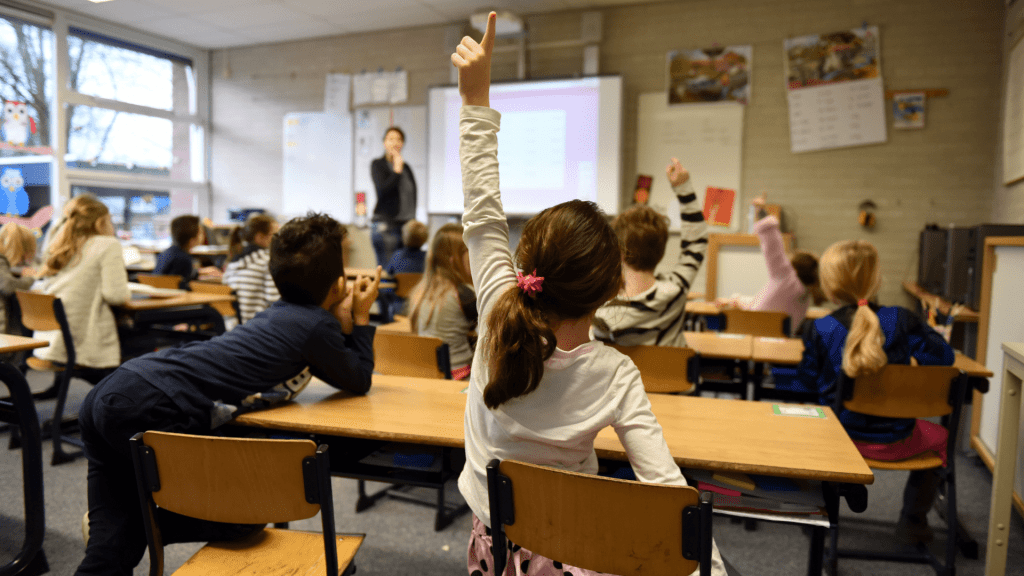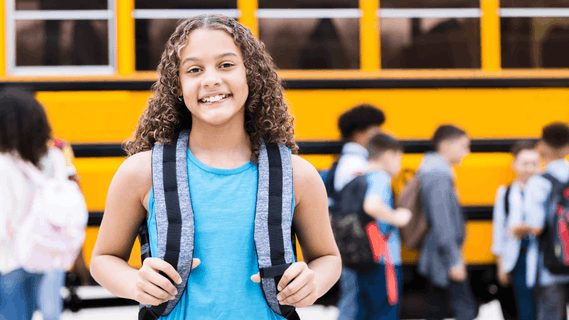It is no secret that physical activity is essential to a student’s development. But what is often overlooked is physical activity’s powerful role in managing student behavior. Research shows that physical activity can be an effective tool for helping students manage their emotions, increase focus, and improve overall classroom behavior. In this article, we will discuss the power of physical activity for managing student behavior and provide practical strategies for incorporating physical activity into the classroom and school culture through regular physical education.
Student Behavior Issues On The Rise
Managing student behavior has always been on the minds of educators and schools. But following a pandemic that drastically altered students’ social-emotional development, schools are seeing a rise in student behavior issues. According to the National Center for Education Statistics (NCES), “84 percent of public schools agreed or strongly agreed that students’ behavior has been negatively impacted” due to the pandemic.
One report from NCES cited the following challenging behaviors to be the most frequently reported:
Classroom disruptions from student misconduct (56 percent)
Acts of disrespect towards teachers and staff (48 percent)
Rowdiness outside of the classroom (49 percent)
The prohibited use of electronic devices (42 percent)
And while many of these results highlight disruptive behavior, it is important to note that students’ behavior can manifest in more passive habits. For example, discussions about managing student behavior should also consider the impacts of lack of focus that often appears in students daydreaming or not paying attention. Again, this may not be regarded as egregious inappropriate behavior, but it still impacts learning in a significant way.

The Importance of Managing Student Behavior
Bad behavior has rippling effects in schools that teachers, school counselors, and administrators all want to address.
In the classroom, disruptive behavior impacts the learning environment for the entire class. When a teacher is constantly dealing with a disruptive student or multiple students, they are forced to spend less time providing effective instruction. In addition, individual students struggle to focus and stay on task.
At a high level, behavior problems can impact the learning environment of the entire school. When behavior issues are a constant problem throughout the school day and school year, the school culture and atmosphere can become toxic. As a result, students struggle to form positive relationships with the school.
And again, while inappropriate behavior needs immediate attention, we should remember the students struggling to focus or stay on task. Even if it is not affecting the entire class, many students need to learn and practice better positive behaviors when it comes to paying attention.
Creating and fostering a healthy learning environment is crucial to students’ classroom and life development. These critical connections have been well documented through research and in conjunction with the Whole School Model created by the CDC.
Managing Student Behavior Strategies
There is no singular solution to behavior management in schools. In fact, there are endless variations and suggestions for managing student behavior.
For example, many teachers and schools look to set clear behavior expectations through a student behavior contract. These contracts outline the expected rules and behaviors, positive reinforcement for fulfilling the contract, and often negative consequences for failing to uphold the agreement.
And while these contracts can help set high-level classroom expectations, teachers know that they also need effective strategies to keep students engaged. An effective teacher aims to build relationships with students, create routines, and stimulate students through dynamic lessons that keep students focused and on task.
So, with all the different strategies, why are schools still struggling to manage student behavior? While there may not be a single magic solution, one strategy is often an afterthought or not considered in the equation for fostering positive behavior.
Student Behavior and Physical Activity
As a society, we have removed most physical activity from our lives. And as adults, we can feel the effects of sitting in front of a computer screen for most of our day. But at the same time, we are surprised when we task students of all ages to do the same, and they struggle to stay focused or on task.
But the benefits of physical activity can directly impact managing student behavior. The CDC has stated:
Students who are physically active tend to have better grades, school attendance, cognitive performance (e.g., memory), and classroom behaviors (e.g., on-task behavior).
Higher physical activity and physical fitness levels are associated with improved cognitive performance (e.g., concentration, memory) among students.
In addition to these facts, ongoing research highlights the impact of exercise on sleep, stress relief, mood, and mental alertness.
With the right amount of physical activity, everyone from the fidgety elementary school student to the exhausted high school student can perform better in school and form more positive relationships with peers and teachers.

Steps To Increasing Physical Activity In Schools
If schools want to see improved student behavior, they should make a concerted effort to increase physical activity in schools. The CDC recommends 60 minutes of physical activity daily for students of all ages. And yet, in most cases, students barely get half of that time! We need to do things differently.
Step 1: Physical education should be a staple of the school day for students of all ages. Physical education provides the best opportunity for students to get regular physical activity and learn crucial skills to pursue physical activity and exercise independently.
Physical education programs teach children the skills and knowledge to establish and sustain an active lifestyle. “A quality physical education program provides learning opportunities, appropriate instruction, meaningful and challenging content for all children.” – Shape America.
Not only is physical education a place where students will learn skills around physical activity, but this is also a time where students develop prosocial behaviors as they work together in fitness, games, and other activities. As schools look to make a positive learning environment where students can feel connected to each other and their school, physical education is one of the best places to achieve this.
Free Fitness Lessons For P.E. Classes
Looking to branch out from the traditional games based P.E model? These 15 ready to go lessons can help!
Step 2: Physical education is one of the best places to guarantee regular physical activity, but there should be other places. Schools should provide other age-appropriate opportunities for students to participate in physical activity. This could be recess for younger students and sports and clubs for older students.
In addition to these times and spaces, all ages can benefit from breaks during classroom time to move. Movement breaks are a popular choice for teachers to help liven up the classroom environment and chip away at 60 minutes of daily physical activity.
Ready to Learn More?
Schedule a free 10 minute consultation to see how PLT4M can increase physical education and physical activity and improve student behavior.
Key Takeaways on Managing Student Behavior
The word managing, tells us everything we need to know about the current state of student behavior. Schools are in survival mode and trying anything they can to get through the school day without any major disprutive behavior.
But over time, we can shift the conversation and realize that with things like regular physical activity, we can promote and instill behavior that will benefit students well beyond the walls of school.
Through physical activity, physical education, and regular exercise, students will learn the best practices of feeling mentally and emotionally health. As a result, we can decrease the amount of bad behavior, and replace it with happy and healthy relationships between peers, teachers, and learning. This is the future. But first, we must invest in the power of physical activity for all students.











